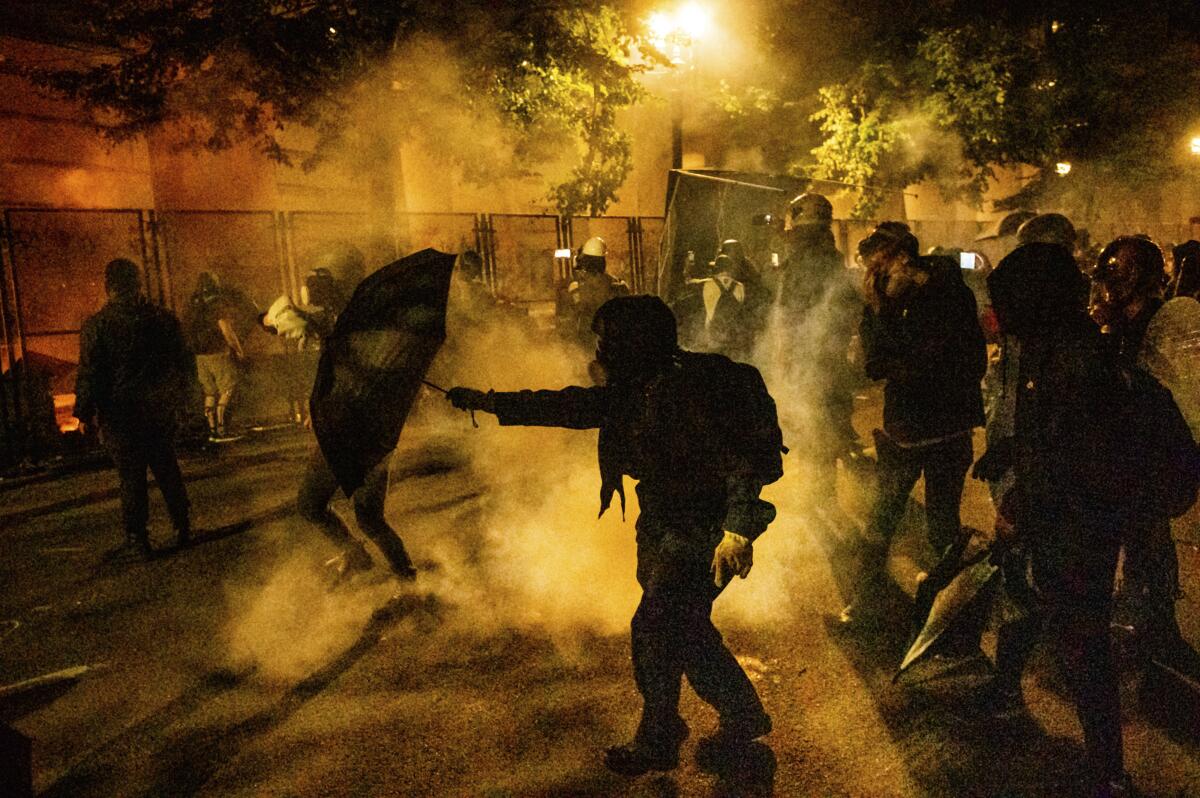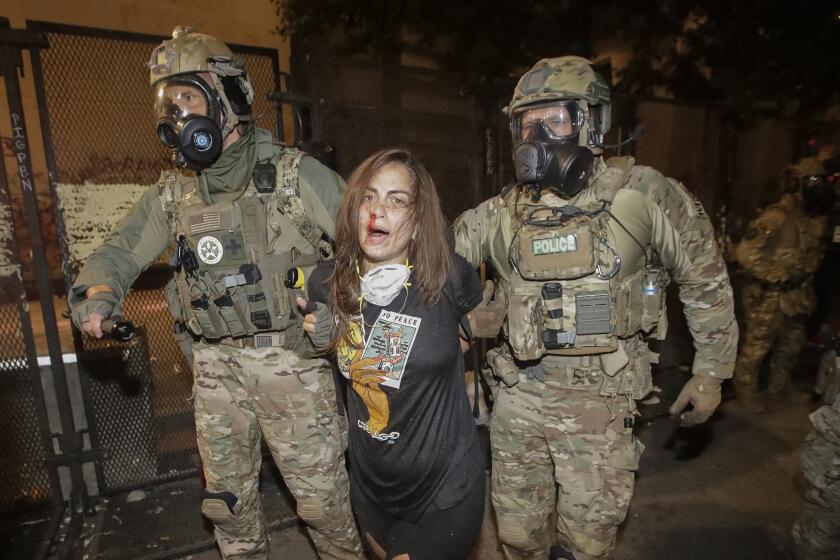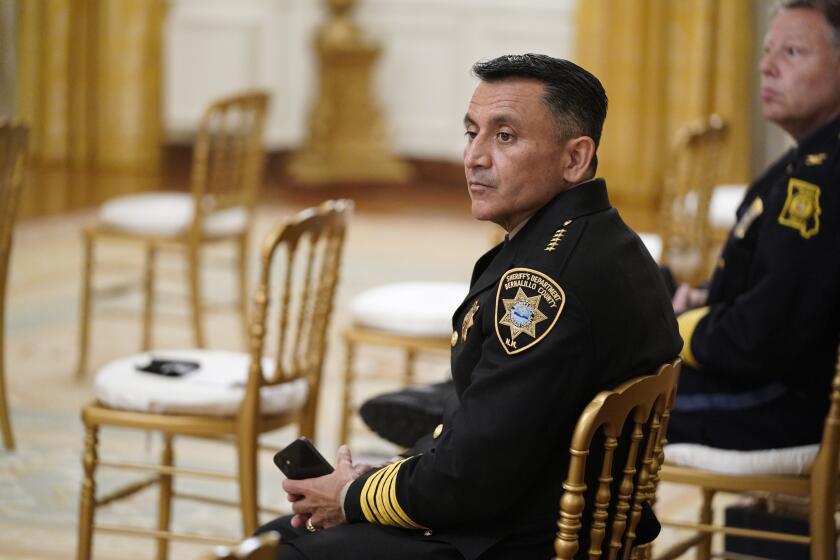Federal agents fire tear gas and rubber bullets at protesters in front of Portland courthouse

- Share via
PORTLAND, Ore. — Following the grim pattern of recent days, protests in front of the federal courthouse in downtown Portland, Ore., devolved into chaos early Friday after dozens of federal agents emerged from the building and confronted demonstrators, deploying tear gas and shooting rubber bullets.
But in what protesters said was a new development, a larger contingent of federal officers than before began pushing demonstrators back, block by block, further away from the Mark O. Hatfield U.S. Courthouse in downtown Portland, the epicenter of nightly protests that have rocked Oregon’s largest city.
After 1 a.m. Friday, loud bangs and shots rang in the air around the courthouse, causing protesters to scurry away. Shouts for medical assistance could be heard as people tried to find help for injured protesters.
It was the latest eruption of violence on Portland’s streets. President Trump has sent in armed federal officers to quell the protests, but the state has sued to limit the intervention, which it says has involved the unlawful detention of people as an intimidation tactic.
Thursday night’s protest had started peacefully. About 10 p.m., the mood was festive, as had been the case on previous nights. Well over 1,000 people had gathered outside the Multnomah County Justice Center and Mark O. Hatfield U.S. Courthouse in downtown Portland.
Protesters shouted, “Black lives matter!” and “Get out, feds, we don’t want you here!” Several dozen protesters at times banged and clanked on the fence, while some threw cardboard and set off fireworks, which sparked a small blaze.
The actions of federal law enforcement officers at protests in Oregon’s largest city are raising the prospect of a constitutional crisis.
That prompted federal agents to issue warnings on loudspeakers close to midnight that if protesters did not leave the fence and disperse, they would use crowd-control munitions. By midnight, the first round of tear gas and pepper balls was fired.
A group of volunteer medics began to warn people that 50 federal agents had left the courthouse and were making their way up 3rd Avenue and Salmon Street. From there the agents used rubber bullets and tear gas as they pushed many of the protesters west, up to Main Street and 6th Avenue.
At about 1:30 a.m., dozens of federal agents lined the exterior of the courthouse as billows of white smoke filled the air. A man lay on the ground, moaning and asking for help. A journalist carried him away.
Another demonstrator, Brian Copley, said it was his second time at the protests since they began following the death of George Floyd in Minneapolis police custody May 25.
“The protests were peaceful. Only a small amount of people were throwing cardboard and fireworks and starting the fire,” he said.
“I was really scared tonight,” he added. “I had never seen or heard of federal officers pushing people so aggressively and this many blocks away from the courthouse and using this much force.”
The federal agents retreated back inside the courthouse after about an hour after protesters had largely dispersed. A small group of people returned to the courthouse and continued demonstrating and banging on the fence, which prompted more tear gas from the agents.
Democratic officials in New Mexico are warning federal agents sent in by the Trump administration against using ‘military-style’ tactics.
Before Thursday’s protests, a judge issued an order that temporarily barred federal agents from using force against journalists and observers at the demonstrations.
But agents seemingly ignored the ruling, made just hours before by U.S. District Court Judge Michael Simon, when they fired tear gas canisters at a group of journalists several feet away who were documenting events.
A Times reporter who had clearly identified herself was hit by a rubber bullet despite having shown her credentials to agents just minutes before.
More to Read
Sign up for Essential California
The most important California stories and recommendations in your inbox every morning.
You may occasionally receive promotional content from the Los Angeles Times.













